It’s been just over six months since our second child was born, and I owe my blog readers a follow-up post about what name we chose!
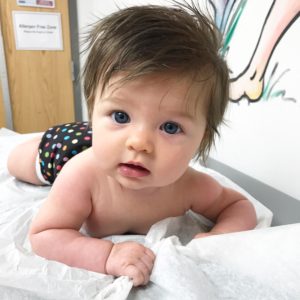
In my earlier post, I wrote about some of the characteristics we looked for in names for our children. Obviously, as a genealogist, it was important to me that the names come from somewhere in our family tree. We also took into consideration popularity, cultural origin and meaning, spelling, initials, and more.
So what did we choose for baby #2?
Meet Lena Maureen.
A More Difficult Decision
We still had our boy’s name from the first time around, and we still liked it. Since we weren’t going to find out the sex ahead of time, we had to pick another girl’s name to cover that possibility. Choosing another girl’s name was much harder than the first time around. With our first child, my wife and I both liked the name Eliza and agreed on it without much discussion. This time, when we shared our short lists for another girl’s name with one another we found zero overlap. And Lena wasn’t on either list!
The reason Lena wasn’t on either list is that none of our ancestors were formally named Lena. The name emerged late in the game as I combed through the family tree again looking for a compromise.
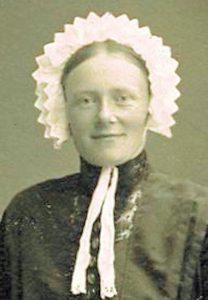
The top name on my wife’s list was Helen, after her great-grandmother Helen Clauson (1884-1963). Looking at Helen more closely I had something of an epiphany. In the U.S., she went by Helen, but she had been baptized in Norway under the name Jakobine Helene Klausdatter. Listen to how that sounds in Norwegian (click the speaker button under Norwegian). Yah’-ko-bee’-nah Heh-leh’-neh.
I then recalled that a number of our other ancestors up several different branches of the family tree were nicknamed Lena. There was German immigrant Helena “Lena” Schultz (maiden name Krieg or Krug or Knag or something; ca1801-1887), my wife’s 3x-great-grandmother. There was also Melina “Lena” Marier (1883-1955), a 2x-great-grandmother on my French-Canadian side. And on my dad’s Old-Stock American side can be found the similar name Laney, belonging to my 4x-great-grandmother Laney Dunham (ca1817-1887).

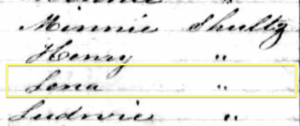


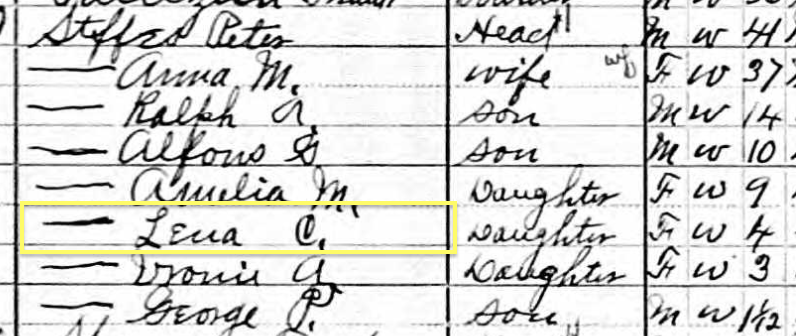
I liked Lena as a name better than most of the names on my wife’s list. What really sold me was that we had found a single name that drew from our daughter’s German, Norwegian, French-Canadian, and English heritage. Now we were talking! My wife liked the name too, and it helped that it derived from her top choice Helen. (Later, after we had agreed on Lena as the name, I was reminded that my biological father’s grandmother Helen Steffes [1905-1977] had been called Lena as a girl. This name draws on nearly every branch of our daughter’s family tree.)
Of course, we still needed to agree on a middle name. And we still had to check all the other naming factors to make sure we didn’t overlook something.
Passing the other tests
The middle name was easy enough. Since our first daughter’s middle name came from my wife’s close family (Pauline, after my wife’s feisty grandma), our second daughter’s middle name would come from my immediate family. It came down to a decision between my mother’s name, Maureen, and my paternal grandmother’s middle name, Lucille. I still like Lena Lucille, but I ultimately decided my mom deserved the honor. She has done a lot in her lifetime to build and maintain family relationships, despite some significant challenges. Passing her name on to Lena serves as a legacy to how important family has always been to her. Plus, the name Maureen is an Irish variation of Mary, so Lena’s full name effectively represents nearly all of her heritage: Norwegian, German, French-Canadian, English, and Irish (with a Czech last name!). Only a direct link to her Dutch ancestry is missing.
Lena also fit most of our other criteria quite nicely.
Popularity—According to Social Security Administration data, Lena was the 304th-most popular baby name in 2017. (For comparison, Eliza ranked 212th in 2014, the year before she was born.) It’s definitely not a Top 10 name, but it’s also not unheard of. People are familiar with it. Perfect.
Functionality—Lena is short and easy to spell. It’s cute for a kid (we call her Lena Bear because of all her hair!) and will look just fine on a resume when she’s applying for jobs.
Initials—L.M.V. doesn’t spell a word. If pronounced, it doesn’t sound like a word. The acronym doesn’t have any widely known associations. All good things!
Meaning—Though Lena has been a common nickname for centuries, it ultimately derives from several other more ancient names. Most often, Lena is a short form of Helena or Magdalena, names which have different origins. Helena—which is the relevant source in our heritage—derives from Greek Helene. In Greek, the name possibly means “light” or “torch,” or more specifically “corposant,” which refers to the electrical glow also known as St. Elmo’s fire that sometimes appears on ships masts and other elevated things during storms. The name’s most famous bearer was of course Helen of Troy, beauty of beauties, whose abduction (or elopement) instigated the Trojan War.
The name Laney derives from the same root. Laney is an English diminutive of the Arthurian name Elaine, which itself is an Old French form of Helen. (If instead Laney Dunham’s given name was actually “Adelana,” as it was recorded only once, in the 1860 census, then the root would be the Germanic element adal meaning “noble.”)
The name Magdalena originated with the Biblical character Mary Magdalene, whose second name means “of Magdala,” a town on the Sea of Galilee. I have a least a dozen distant French-Canadian ancestors named Marie Magdeleine, but they’re not the reason we chose the name Lena.
Much more relevant was the given name of my 2x-great grandmother Lena Dupre. She was baptized as Marie Melina Marier and gave Melina as her name on her marriage license. Apart from official documents, she was called simply “Lena.” The name Melina, like Melissa and Melanie, derives from the Greek word meli, meaning honey. Melina is a diminutive form meaning “little honey.”
Taken together, these meanings further convinced me that this was the right name for our daughter. Our Lena would be a light to the world, and not just any light, but a kind seen only rarely, under exceptional circumstances. She would be noble and forthright but also sweet (like honey), her heart filled with kindness. She would be bold and beautiful like Helen of Troy, and maybe just maybe change the course of world history as much as that Helen did. Whether any of this actually pans out waits to be seen. These ideals, at least, will shape how we raise her.
Spelling and Pronunciation—All of our ancestors spelled the nickname Lena the same way—L-E-N-A—so there wasn’t any debate here. The real underlying issue, as we’ve discovered, is pronunciation.
If there is an area of concern with the name Lena it is ambiguous pronunciation. Admittedly, this did not occur to my wife and me. When we discussed the name, we both used the same pronunciation: lay-nuh. We assumed (wrongly) that since we were native speakers of American English, we must have picked this up correctly. However, since Lena’s birth, many people have initially greeted her as lee-nuh. The automated appointment reminder from the doctor’s office says lee-nuh. Yes, we were aware of the old Ole and Lena jokes, which used to be especially popular here in Minnesota. In those jokes, the accent of Scandinavian immigrants is exaggerated for effect [Oh-laaaay and Leeee-nuh]. But our generation doesn’t use them. They’re finally on their way out.
I suspect my intuitive pronunciation of lay-nuh is due to my being much more tuned-in to the name’s European origins than most Americans. In Europe it’s leh-nuh or lay-nuh. In my head, lee-nuh would be written Lina. A comment by user HungarianNameGeek on Babynamewizard.com’s page for “Lena” states the issue succinctly:
The letter ‘e’ has two possible values in many European languages: /eh/ like in ‘set’ (or the Greek letter epsilon), or /ay/ like the vowel in ‘say’ (or the Greek letter eta). Thus, from Europeans you’re about equally likely to get LEH-na or LAY-na. It’s really only in English that LEE-na is a possibility, due to the Great English Vowel Shift; in most other languages, you’d need to write it as Lina to get it pronounced with an /ee/.
My first guess would be LEH-na, I think, but most likely I’d try to wait for someone else to say it first – and then I’d promptly forget which version it was.
If you can have a Zen attitude that LEE-na, LEH-na, and LAY-na are all correct, just in different languages or accents, then Lena is a lovely name. (I especially like it as a nickname for Magdalena or Helena.)
Look at the ancestors from whom we drew the name. The only one we believe pronounced her name lee-nuh was Lena Marier. In her case the /ee/ sound derived from a full name (Melina) where the sound was represented by ‘i,’ as one would expect from people whose native language was French. I knew Lena Marier pronounced her name lee-nuh, but because Melina is much less common than Helena or Magdalena AND is spelled with an ‘i,’ I assumed it was the outlier.
Anyway, we decided just to go with the Zen attitude. If having her name slightly mispronounced the first time she meets someone is the worst thing in her life, then our Lena will be doing just fine. We’ve told several friends to think of it as we do, as a nickname for Helena or Magdalena or Adelana, and that has seemed to help.
Mini Ancestor Bios
The final piece of the naming puzzle was to examine the lives of the ancestors who carried the name. What inspiring stories about them can we share with our daughter as she grows up? Here are brief biographies that give a glimpse into the lives and characters of the four women who most directly inspired our daughter’s name.
Jakobine Helene Klausdatter Hantveit was born in 1884 on Hantveit farm in the municipality of Gulen, Norway. She grew up looking out over Gulenfjord not far from the site of the ancient Gulating. As a girl, she spent her summers up in the mountains on a seter, a seasonal pasture farm, where she helped milk the goats.
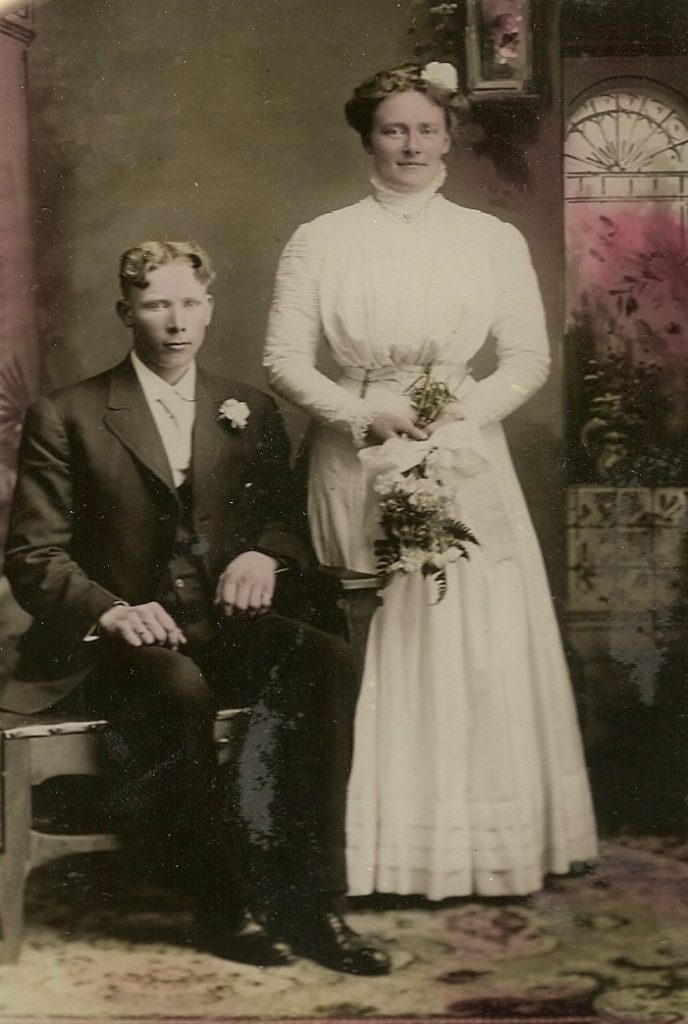
One of her schoolmates in Gulen was a boy named Louis Henrickson. Louis came from a very poor family—so poor, in fact, that he and his sister Lise were raised by an uncle. According to their daughter Marvis, “after their schooling [Helen and Louis] wanted to get married, but Helen’s parents did not feel that Louis was good enough for her.” So in 1906 Helen’s parents shipped her off to America to live with her uncle near Glenwood, Minnesota. An emigration record from Bergen, Norway, reports that Helen was going to America for bedre fortj, “better fortunes,” which from her parents’ perspectives meant better marriage prospects. According to Marvis, before Helen departed Louis gave her a friendship ring.
In what must have been a great surprise, Louis arrived in Minnesota just a year later. Apparently too poor to pay his own way, he had nonetheless made it happen. He had found an old friend who already lived in Minnesota—not far from Helen as it turned out—who was willing to pay his passage. (Had Helen secretly contributed?) Once in Minnesota, Louis put the carpentry skills he had learned from his uncle to work to earn a living. He found Helen, who was earning her own keep working in a laundry in Glenwood, and the two of them married there in 1909, far beyond the reach of Helen’s parents. They “lived happily ever after,” wrote their daughter Marvis.
Helena “Lena” Krug/Krieg/Knag (her maiden name is difficult to read and/or appears different in different documents) was born somewhere in the northern German region of Mecklenberg around 1801. In Germany she married Heinrich Schultz and together they had at least three children. The Schultz family emigrated in about 1857 or 1858, settling first in upstate New York. Her son Ludwig enlisted to fight in the 57th New York Infantry during the Civil War.
After Ludwig mustered out in 1864, Lena and her family moved west to settle near the village of Waverly in Wright County, Minnesota. I believe the Homestead Act drew them west. After Heinrich died in 1867, Lena finished the Homestead process. According to one of the Schultz children, soon after their arrival in Waverly, the family “conducted a boarding house for laborers engaged in laying the railroad tracks through the village. Among their patrons was James J. Hill,” Minnesota’s most famous railroad tycoon. Lena lived with one or another of her children in Wright County until her own death there in 1887.
Marie Melina “Lena” Marier was born in Centerville, Minnesota, in 1883, the first of fourteen children of Camille Alphonse Marier and Marie Angelique Forcier. Her mother was just 16 years old and her father 18 when she was born. Though Lena’s mother’s family had been in Minnesota since 1847, Lena’s father and all of her grandparents had been born in Quebec. When she was 18, Lena married Oliver Delphis Dupre, an American-born man who also had fully French-Canadian heritage. French was the family’s primary language while Lena was growing up, and indeed for her whole life. Lena’s eldest daughter Alice reported that she didn’t know any English until she started school in about 1908.
Lena Marier Dupre’s life was arguably the most challenging of any of these women. The Dupres were dirt poor. As a married couple, she and Delphis lived on a small farm plot right next to railroad tracks in a two-room house that lacked insulation. Lena’s daughter Alice, born in 1903, remembered,
The only heat we had upstairs would come through a small grate above the wood heater that was downstairs. Believe me, we didn’t play around when we were getting dressed. . . . We survived several winters there. There were no iceboxes for the summer, only the flowing well or spring.
We led a happy life there on the farm, but it was a lot of work for my mother. In order to cook she had to get the kitchen range quite hot, . . . and most of the time it was three meals a day. She had big washings and a lot of ironing. My father had help [farmhands] too, his dad stayed with us, and now and then his brother (my uncle Evod and his wife Stella) would come for a while, especially in the summer. So we were quite a few around the table, and if there were too many, the children would have to wait until the grown-ups were finished.
In 1918, Delphis was killed in a hunting accident, leaving Lena with eight children ages three-months to 14 years. To help the family survive, she took a job “at the hotel in Forest Lake [since] she could walk there. . . . When there was extra soup left over, the hotel keeper would give it to her.” While Lena worked, teenager Alice took care of all the younger kids. Alice never went back to school. Later, to help the family survive, Lena “bought a sewing machine and sewed for [our family] and for others.” Things finally got a little easier once more of Lena’s children were old enough to help support her. She got them through the toughest years.
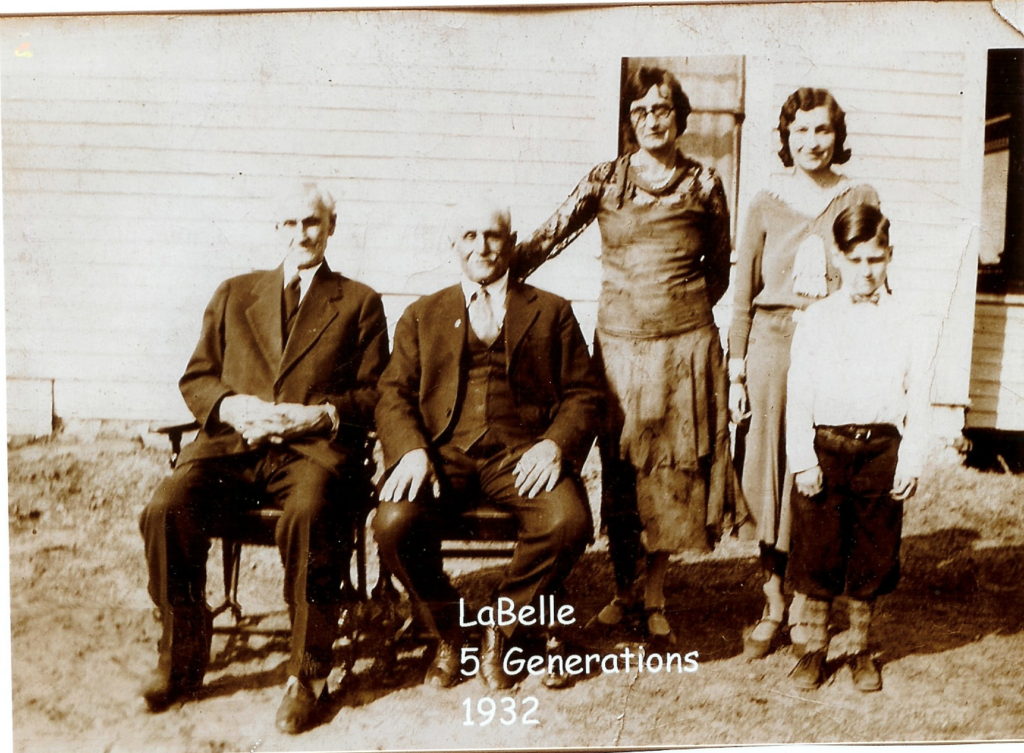
Laney Dunham was born around 1817 probably in Smithfield, Jefferson County, Ohio. (The 1860 census hints that her full name might have been “Adelana,” but all other records show her name as Laney.) Her parents had migrated from western Maryland to Jefferson County in eastern Ohio during the first decade of the 1800s. In 1820, her father purchased federal land a little bit further west in Harrison County, Ohio, and Laney grew up on a farm there. In 1833, she married Nelson Whitten, a young man from a neighboring family.
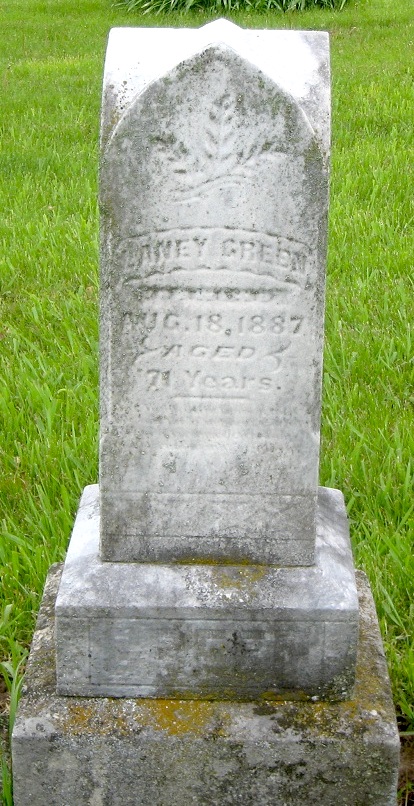
The Dunham, Whitten, Carnes, Nelson, Chaney, and other related families were early converts to the United Brethren Church. In fact, Laney’s brothers Abel and Joshua Dunham both became ministers for the church. We don’t know what Laney’s political beliefs were, but if they were anything like the men around her she was probably a reformer and a strong supporter of the Union cause in the Civil War. Her brother Abel was known to be a staunch abolitionist and was later a proponent of the temperance movement. Her son Nathaniel Whitten volunteered for service in Company I of the 33rd Illinois Infantry regiment in September 1861, and was discharged for disability in 1863.
Arguably the defining feature of Laney Dunham’s life was widowhood. Her first husband Nelson Whitten died when he was only in his 30s. It is unclear where he died. Sometime in the late 1840s, Laney and possibly Nelson joined a caravan of extended family who all went west to buy farmland in Pike County in western Illinois. Perhaps during the journey and certainly within a few years of their arrival in Illinois, Nelson died, leaving Laney a widow with five young children. Laney married again in 1850 to Andrew Gansley, a man twenty years her senior. Within a few years he died, and Laney remarried again in 1854. Her third husband, Henry Green, was almost twenty years younger than she was—young enough to enlist in the Civil War. They had one child together in 1856. In September 1861, Henry joined his stepson Nathaniel Whitten in the 33rd Illinois Infantry. He was killed a year later near Bolivar, Mississippi, as the steamboat he was on was fired on by 2,000 rebel soldiers perched high above on the Mississippi River levee.
Laney had lost three husbands before she turned 46. If there was any consolation, it was that her last husband had died in the line of duty. For the rest of her life she received a widow’s pension of $8 dollars per month. She never remarried.
When I think of words that describe these four women, several come to mind: perseverance, resourcefulness, independence. In an era in which women’s lives were largely controlled or defined by fathers and husbands, each of these women demonstrated the ability to survive on her own and to make her own decisions. Helen Clauson was adamant enough about her choice of marriage partner that her parents sent her across an ocean to prevent it. The two of them found a way to be together anyway. The other three women survived as widows for decades. Lena (Krug) Schultz completed her husband’s Homestead claim. Lena Marier worked impossibly hard to keep her eight children fed and clothed after her husband’s accidental death. Laney Dunham endured the deaths of three husbands, but still had the courage to get up every morning to live another day. I certainly don’t wish my daughter to endure the same struggles these ancestors faced, but if she faces her own struggles like they did, with perseverance, resourcefulness, and independence, she will find success and happiness.
(Whew, all this about a baby name? I guess it’s just who I am.)
